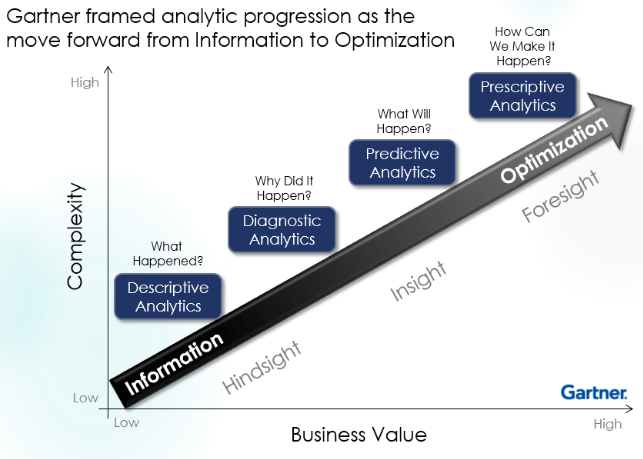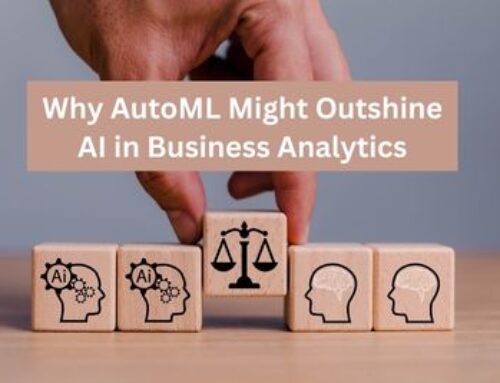A recent article in KDnuggets presented the four types of data analytics we encounter in data science: Descriptive, Diagnostic, Predictive and Prescriptive. This grouping is familiar to many. At Lityx we find Gartner’s analytic progression chart useful when explaining the types of analysis we can do and their relation to business value and complexity.
In the article, the author notes, “When I talk to young analysts entering our world of data science, I often ask them what they think is data scientist’s most important skill. Their answers have been quite varied. My message to them is that their most important skill will be their ability to translate data into insights that are clear and meaningful to a non-quant”.
It is true that a critical ability and foundational expectation of a good analyst is analyzing data, finding valuable insight within it, and then explaining this to a non-quant. As analysts, we are often challenged by the number of things we want to say and struggle to be succinct and decide on the most important subset of information. The more information we share the less any one thing stands out and the non-quant becomes overwhelmed and these presentations usually lead to the question, “So what? What do I do with this insight?” Who among us has not had a senior manager or client ask that question after we’ve presented a beautiful analysis with what we believe is a lot of valuable insight?
This challenge is commonly referred to as the insights-to-action gap. There are countless tools and methods within each of the four types of data analytics for getting insight out of data. The bigger and more difficult challenge is turning that insight into action. What should we do differently based on your findings? This is what the senior manager or client wants to know. You can support the recommendation with the insights you have uncovered and help them to understand the why. Some prefer to build up their argument to the actionable conclusion, but my preference is to tell the audience what you are going to recommend along with the benefits and then as time allows cover the high-level to the more detailed supporting analysis.
Gartner has another useful chart that depicts the insights-to-action gap in which they illustrate the size of the gap getting smaller and non-existent as you move from descriptive analytics to prescriptive analytics. The chart suggests human input is needed to bridge the analytic insights to decision and action. This is a nice way of helping to understand the different types of analytics and what one might expect from each.
Descriptive analytics is just reporting. We have all had the experience of looking at a report that offers no attempt to bridge the insights-to-action gap. Returning to my earlier point—even if we provide key insights through descriptive analytics, it doesn’t get us to the point of being able to recommend actions from those insights. We may not know and/or the analysis may not be clear. This is where the more advanced types of analytics become useful and tell us what action the senior leader or client should take. We will still likely want to have the less complex types of analytic output to help explain why.
Keep this in mind as you conduct your analysis.





